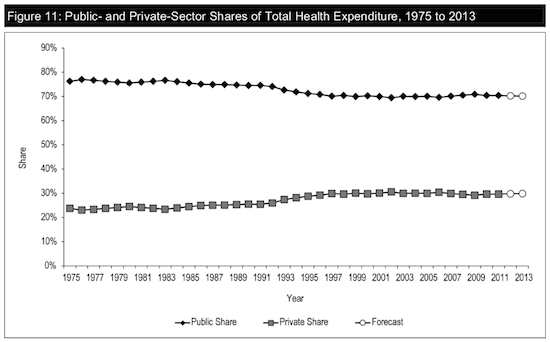By Sierra Rayne ——Bio and Archives--September 11, 2014
Canadian News, Politics | CFP Comments | Reader Friendly | Subscribe | Email Us
"Instead, Harper has paid lip service to public health care -- while starving it of funds. Waiting until he'd secured his majority, he announced plans in December 2011 that would effectively cut in half the rate of growth of federal health transfers to the provinces, starting in 2017 -- amounting to an estimated cut of $36 billion over ten years. The cuts -- along the lines long advocated by the right -- will dramatically shrink public funding for health care over time, forcing Canadians to pay more of their health care costs privately, on the grounds that the public system is unaffordable. In fact, the record shows the opposite. As UBC health economist Robert Evans put it: 'Opponents of medicare claim that public health care is 'fiscally unsustainable' and that the only viable solution is a shift to more private coverage. Bluntly, this is a lie.'
 McQuaig needs to clarify the source of her health spending data and any detailed calculations she conducted, as it doesn't look consistent with any of the standard national or international datasets that are publicly available.
McQuaig needs to clarify the source of her health spending data and any detailed calculations she conducted, as it doesn't look consistent with any of the standard national or international datasets that are publicly available.View Comments
Sierra Rayne holds a Ph.D. in Chemistry and writes regularly on environment, energy, and national security topics. He can be found on Twitter at @srayne_ca